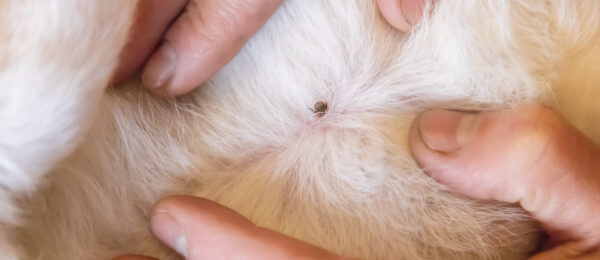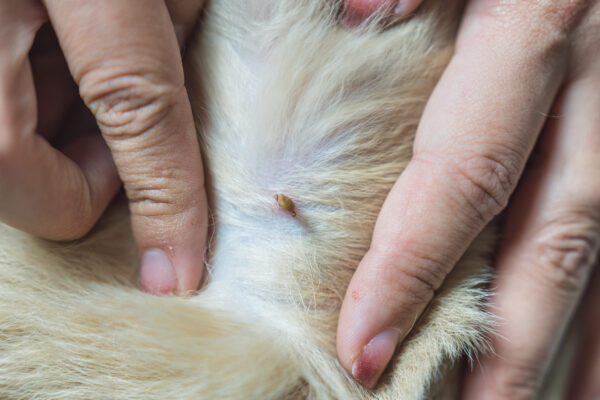body {
font-family: Arial, sans-serif;
line-height: 1.6;
color: #333;
max-width: 800px;
margin: 0 auto;
padding: 20px;
}
p { font-size: 18px; }
h1, h2, h3 { color: #2c3e50; }
.toc {
background-color: #f8f9fa;
padding: 20px;
border-radius: 5px;
margin-bottom: 20px;
}
.toc ul { padding-left: 20px; }
.fact {
background-color: #e9f7ef;
padding: 15px;
border-left: 5px solid #27ae60;
margin-bottom: 20px;
}
table {
border-collapse: collapse;
width: 100%;
margin-bottom: 20px;
}
th, td {
border: 1px solid #ddd;
padding: 8px;
text-align: left;
}
th {
background-color: #f2f2f2;
}
Table of Contents
- Introduction
- 1. Fleas Can Jump Incredibly High
- 2. Fleas Spend Most of Their Lives Off Your Dog
- 3. Fleas Can Transmit Diseases to Humans
- 4. Your Dog Might Be Allergic to Fleas
- 5. Fleas Can Survive Without Food for Months
- 6. Cold Doesn’t Kill Fleas, But Heat Does
- 7. Fleas Are Masters of Reproduction
- 8. Some Dogs Are More Attractive to Fleas Than Others
- 9. Natural Flea Repellents Can Be Effective
- Frequently Asked Questions
- Conclusion
- References
Introduction
Fleas are more than just a nuisance for our canine companions. These tiny parasites can cause significant discomfort and health issues for dogs and even pose risks to human health. As responsible pet owners, understanding these persistent pests is crucial for effective prevention and control. According to the Companion Animal Parasite Council (CAPC, 2023), Dog Fleas are the most common external parasite found on pets. This article will explore nine surprising facts about fleas and their relationship with dogs, shedding light on aspects you might not have known before.
1. Fleas Can Jump Incredibly High

When it comes to jumping abilities, fleas are nature’s Olympic champions. These tiny insects can leap to heights up to 150 times their own body length. To put this in perspective, if a human had the same jumping ability relative to body size, they could easily leap over a 30-story building (Sutton & Burrows, 2011).
The flea’s incredible jumping power comes from a unique physiological feature:
- A protein called resilin in their legs acts like a spring mechanism
- This allows fleas to store and release energy rapidly, propelling them to extraordinary heights
- Their jump acceleration is 50 times greater than a space shuttle during launch
This remarkable ability makes fleas extremely efficient at moving between hosts and explains why they can seem to appear on your dog seemingly out of nowhere. It’s also why thorough environmental treatment is crucial in flea control – these pests can easily jump from the floor onto your pet or even onto you (Blagburn & Dryden, 2009).
2. Fleas Spend Most of Their Lives Off Your Dog

Contrary to popular belief, adult fleas spend only a small portion of their lives on your dog. In fact, about 95% of a flea population in a home environment exists in the egg, larval, or pupal stages, all of which occur off the host animal (Rust, 2017).
The flea life cycle consists of four stages:
- Egg: Laid on the host but quickly falls off into the environment
- Larva: Hatches from the egg and lives in carpets, bedding, or soil
- Pupa: Develops in a cocoon, which can remain dormant for months
- Adult: Emerges from the cocoon and seeks a host to feed on
This fact has important implications for flea control:
- Treating only your dog is not sufficient to eliminate a flea infestation
- Environmental treatment is crucial to break the flea life cycle
- Consistent, long-term flea prevention is necessary to prevent reinfestation
Understanding this aspect of flea biology helps explain why flea problems can persist even after treating your dog, and underscores the importance of comprehensive flea control strategies that address all stages of the flea life cycle (Dryden & Rust, 1994).
3. Fleas Can Transmit Diseases to Humans

While we often think of fleas as primarily a problem for our pets, these tiny parasites can pose significant health risks to humans as well. Fleas are capable of transmitting several diseases that can affect both dogs and their human companions (Centers for Disease Control and Prevention [CDC], 2022).
Some of the diseases that fleas can transmit to humans include:
- Murine Typhus: Caused by Rickettsia typhi bacteria
- Bartonellosis (Cat Scratch Disease): Caused by Bartonella henselae bacteria
- Plague: Caused by Yersinia pestis bacteria (rare in modern times but historically significant)
- Tungiasis: Caused by the burrowing flea Tunga penetrans
Additionally, flea bites themselves can cause allergic reactions in some people, leading to intense itching, redness, and swelling. In rare cases, severe allergic reactions can occur (CDC, 2022).
This zoonotic potential of fleas underscores the importance of effective flea control not just for our pets’ health, but for human health as well. Regular flea prevention for pets, combined with good hygiene practices, can significantly reduce the risk of flea-borne diseases in both animals and humans (Bitam et al., 2010).
4. Your Dog Might Be Allergic to Fleas

Flea Allergy Dermatitis (FAD) is one of the most common skin conditions in dogs, yet many pet owners are unaware that their dog could be allergic to flea bites. This allergic reaction is not caused by the flea itself, but by proteins in the flea’s saliva that are injected into the dog’s skin when the flea bites (Siak & Burrows, 2019).
Key points about Flea Allergy Dermatitis:
- It can cause intense itching, even from just a few flea bites
- Symptoms often appear on the base of the tail, lower back, and thighs
- Affected dogs may develop hot spots, hair loss, and skin infections
- The allergy can develop at any age, but is most common in dogs over five years old
Interestingly, dogs with FAD often have very few visible fleas on them. This is because they groom excessively due to the intense itching, often removing fleas before they can be spotted. As a result, some pet owners mistakenly believe their dog doesn’t have fleas when in fact, they’re suffering from an allergic reaction (Miller et al., 2013).
If you suspect your dog might be allergic to fleas, it’s crucial to consult with a veterinarian. They can confirm the diagnosis and recommend appropriate treatment, which typically involves strict flea control and may include anti-inflammatory medications or immunotherapy in severe cases.
5. Fleas Can Survive Without Food for Months

One of the most surprising and problematic aspects of flea biology is their ability to survive for extended periods without feeding. This remarkable survival skill makes flea infestations particularly challenging to eliminate and explains why fleas can seem to “reappear” even after you thought you’d gotten rid of them (Dryden & Rust, 1994).
Key facts about flea survival:
- Adult fleas can live up to 2 weeks without feeding
- Flea pupae can remain dormant in their cocoons for up to 5 months, or even longer under ideal conditions
- Newly emerged adult fleas can survive in their cocoons for up to 9 months without feeding
This survival ability is due to several factors:
- Fleas have a low metabolism when not actively feeding
- The pupal stage is protected by a cocoon that resists desiccation and many insecticides
- Adult fleas don’t emerge from their cocoons until they detect a potential host nearby
This long survival period has significant implications for flea control:
- A home can remain infested even if no pets have been present for months
- Flea prevention needs to be consistent and long-term to be effective
- Environmental treatment may need to be repeated to address newly emerging fleas
Understanding this aspect of flea biology highlights the importance of persistent and comprehensive flea control strategies. It’s not enough to treat your pet once or twice; ongoing prevention and environmental management are crucial for long-term flea control (Rust, 2017).
6. Cold Doesn’t Kill Fleas, But Heat Does
Many pet owners believe that cold weather will kill fleas, providing a reprieve from these pests during winter months. However, this is a common misconception. Fleas are surprisingly resilient to cold temperatures, but they are vulnerable to heat (Dryden & Rust, 1994).
Facts about fleas and temperature:
- Fleas can survive freezing temperatures for short periods
- They often find warm microhabitats to overwinter, such as on wildlife or in heated buildings
- Flea eggs and pupae are even more cold-resistant than adult fleas
- High temperatures (above 95°F or 35°C) can kill fleas at all life stages
This temperature resilience means:
- Flea problems can persist year-round, even in cold climates
- Heat treatments can be an effective part of flea control strategies
- Washing pet bedding in hot water can help eliminate fleas, eggs, and larvae
Understanding the temperature tolerance of fleas is crucial for effective control. While cold weather alone won’t solve a flea problem, incorporating heat treatments into your flea control strategy can be highly effective. This might include washing pet bedding in hot water, using a hot dryer for items that can’t be washed, or even professional heat treatments for severe infestations (Rust & Dryden, 1997).
7. Fleas Are Masters of Reproduction
One of the reasons fleas are such persistent pests is their remarkable reproductive capacity. Female fleas are prolific egg-layers, capable of producing a staggering number of offspring in a short period. This rapid reproduction rate is a key factor in why flea infestations can quickly spiral out of control if not addressed promptly (Rust, 2017).
Key facts about flea reproduction:
- A single female flea can lay up to 50 eggs per day
- One female flea can produce up to 2,000 eggs in her lifetime
- Flea eggs hatch into larvae within 2-12 days, depending on environmental conditions
- The entire flea life cycle can be completed in as little as 2-3 weeks under ideal conditions
| Flea Life Stage | Duration | Key Facts |
|---|---|---|
| Egg | 2-12 days | Female can lay up to 50 eggs per day |
| Larva | 5-11 days | Feed on organic debris and flea dirt |
| Pupa | 5 days to 9 months | Can remain dormant until a host is detected |
| Adult | 2-3 months (on host) | Can lay up to 2,000 eggs in a lifetime |
This rapid reproduction rate has several implications:
- Flea populations can explode quickly if left unchecked
- A few fleas can turn into a major infestation in a matter of weeks
- Continuous, long-term flea prevention is crucial to break the reproductive cycle
- Treating the environment is as important as treating the pet to control all life stages
Understanding the reproductive potential of fleas underscores the importance of early intervention and consistent prevention. Even a small number of fleas can quickly lead to alarge-scale problem, making regular flea control measures essential for all dog owners (Blagburn & Dryden, 2009).
8. Some Dogs Are More Attractive to Fleas Than Others
While all dogs can get fleas, research suggests that some dogs seem to be more attractive to these parasites than others. This phenomenon isn’t fully understood, but several factors appear to influence a dog’s “flea appeal” (Halliday et al., 1986).
Factors that may make a dog more attractive to fleas:
- Body Temperature: Dogs with higher body temperatures may attract more fleas
- Carbon Dioxide Production: Dogs that produce more CO2 (often larger breeds) can be more attractive
- Skin Conditions: Dogs with certain skin issues might be more appealing to fleas
- Fur Type: Long, thick coats provide more hiding places for fleas
- Individual Chemical Makeup: Each dog’s unique body chemistry may play a role
Implications of this “flea attractiveness”:
- Some dogs in a multi-pet household may need more intensive flea prevention
- Certain breeds might be more prone to flea infestations
- Individual dogs may require tailored flea control strategies
While all dogs need protection against fleas, understanding that some may be more attractive to these parasites can help pet owners and veterinarians develop more effective, personalized flea control strategies. If you notice that one of your dogs seems to get fleas more often than others, it may be worth discussing additional or alternative prevention methods with your veterinarian (Siak & Burrows, 2019).
9. Natural Flea Repellents Can Be Effective
While chemical flea treatments are often the go-to solution for many pet owners, there’s growing interest in natural flea repellents. Surprisingly, some natural substances can be quite effective in repelling fleas, offering an alternative or complementary approach to traditional flea control methods (Adorjan & Buchbauer, 2010).
Some natural flea repellents include:
- Cedarwood oil: Known for its insecticidal properties
- Lemongrass: Contains citral and geraniol, which repel fleas
- Peppermint: The strong scent can deter fleas
- Rosemary: Can be used as a flea-repelling herb in the garden or as an oil
- Diatomaceous earth: A natural powder that can dehydrate and kill fleas
Benefits of natural flea repellents:
- Often safer for pets and humans when used correctly
- Can be used in conjunction with traditional flea control methods
- May help prevent flea resistance to chemical treatments
- Can be used in the environment as well as on pets (with veterinary guidance)
While natural flea repellents can be effective, it’s important to note that they should be used cautiously and under veterinary guidance. Some essential oils can be toxic to pets if used incorrectly. Additionally, natural repellents may not be sufficient on their own for severe infestations or in areas with high flea populations. They are often best used as part of a comprehensive flea control strategy that may include traditional treatments as well (Isman, 2006).
Frequently Asked Questions
Q1: Can fleas live in human hair?
A1: While fleas can bite humans and occasionally may be found in human hair, they do not typically live or lay eggs in human hair. Fleas prefer the denser fur of animals like dogs and cats. If you find fleas in your hair, it’s likely due to close contact with an infested pet or environment rather than a human infestation (CDC, 2022).
Q2: How long can fleas live in carpet?
A2: Fleas can live in carpets for quite some time, especially in the egg and pupal stages. Flea eggs can survive for about 10 days, larvae can live for several weeks, and pupae can survive for months. Adult fleas without a host can live in carpet for about 1-2 weeks. This is why thorough vacuuming and environmental treatment are crucial parts of flea control (Rust, 2017).
Q3: Can fleas survive the washing machine?
A3: Fleas typically cannot survive a wash cycle, especially if the water is hot. Washing pet bedding, throws, and other fabric items in hot water (at least 140°F or 60°C) can effectively kill fleas at all life stages. Following up with a hot dryer cycle provides extra assurance (Blagburn & Dryden, 2009).
Q4: Do flea collars really work?
A4: The effectiveness of flea collars can vary. Modern flea collars that use newer, more effective ingredients can provide good protection. However, they may not be as comprehensive as some topical or oral flea preventatives. The efficacy also depends on correct use and whether the collar covers both fleas and ticks. It’s best to consult with your veterinarian to determine the most appropriate flea control method for your dog (Halos et al., 2014).
Q5: Can fleas make dogs sick?
A5: Yes, fleas can indeed make dogs sick. Beyond the discomfort of itching and potential skin infections from scratching, fleas can cause more serious health issues. These include anemia (especially in puppies or small dogs with heavy infestations), tapeworm infections (if dogs ingest fleas while grooming), and allergic reactions like Flea Allergy Dermatitis. In rare cases, fleas can also transmit diseases to dogs (Siak & Burrows, 2019).
Conclusion
Understanding these lesser-known facts about fleas and their relationship with our canine companions is crucial for effective prevention and control. From their incredible jumping abilities to their resilience and reproductive prowess, fleas are formidable parasites that require vigilant management.
Key takeaways from our exploration include:
- The importance of treating both your pet and the environment for comprehensive flea control
- The potential health risks fleas pose not just to dogs, but to humans as well
- The surprising resilience of fleas to cold temperatures and their vulnerability to heat
- The need for consistent, long-term flea prevention strategies
- The potential of natural flea repellents as part of a holistic approach to flea control
Armed with this knowledge, pet owners can better protect their dogs and homes from these persistent pests. Remember, while fleas are a common problem, they are manageable with the right approach. Regular preventive measures, prompt treatment of infestations, and maintaining a clean environment are key to keeping your furry friend flea-free and healthy (Halos et al., 2014).
For more information on pet care and adorable dog content, visit Flawless Cuties. Stay informed, be proactive, and enjoy a happy, healthy life with your canine companion!
I Don’t Want to Hit My Dog, But I Want Them to Obey – What Should I Do? Here’s How to Train Your Dog PositivelyThe Best Homemade Dog Food Recipes: A Comprehensive GuideTop 10 Best Dog Breeds for Apartments: A Comprehensive GuideObedience Puppy Training: A Step-by-Step GuideCan I Pet That Dog? A Comprehensive Guide to Safe and Enjoyable Interactions
References
Adorjan, B., & Buchbauer, G. (2010). Biological properties of essential oils: An updated review. Flavour and Fragrance Journal, 25(6), 407-426. https://doi.org/10.1002/ffj.2024
Bitam, I., Dittmar, K., Parola, P., Whiting, M. F., & Raoult, D. (2010). Fleas and flea-borne diseases. International Journal of Infectious Diseases, 14(8), e667-e676. https://doi.org/10.1016/j.ijid.2009.11.011
Blagburn, B. L., & Dryden, M. W. (2009). Biology, treatment, and control of flea and tick infestations. Veterinary Clinics: Small Animal Practice, 39(6), 1173-1200. https://doi.org/10.1016/j.cvsm.2009.07.001
Centers for Disease Control and Prevention. (2022). Fleas. https://www.cdc.gov/fleas/index.html
Companion Animal Parasite Council. (2023). Fleas. https://capcvet.org/guidelines/fleas/
Dryden, M. W., & Rust, M. K. (1994). The cat flea: biology, ecology and control. Veterinary Parasitology, 52(1-2), 1-19. https://doi.org/10.1016/0304-4017(94)90031-0
Halliday, R. B., O’Connor, B. M., & Baker, A. S. (1986). The flea. Medical and Veterinary Entomology, 1(1), 1-27. https://doi.org/10.1111/j.1365-2915.1986.tb00293.x
Halos, L., Beugnet, F., Cardoso, L., Farkas, R., Franc, M., Guillot, J., … & Wall, R. (2014). Flea control failure? Myths and realities. Trends in Parasitology, 30(5), 228-233. https://doi.org/10.1016/j.pt.2014.02.007
Isman, M. B. (2006). Botanical insecticides, deterrents, and repellents in modern agriculture and an increasingly regulated world. Annual Review of Entomology, 51, 45-66. https://doi.org/10.1146/annurev.ento.51.110104.151146
Miller, W. H., Griffin, C. E., Campbell, K. L., & Muller, G. H. (2013). Muller and Kirk’s Small Animal Dermatology (7th ed.). Elsevier Health Sciences.
Rust, M. K. (2017). The biology and ecology of cat fleas and advancements in their pest management: a review. Insects, 8(4), 118. https://doi.org/10.3390/insects8040118
Rust, M. K., & Dryden, M. W. (1997). The biology, ecology, and management of the cat flea. Annual Review of Entomology, 42(1), 451-473. https://doi.org/10.1146/annurev.ento.42.1.451
Siak, M., & Burrows, M. (2019). Flea control in cats: New concepts and the current armoury. Journal of Feline Medicine and Surgery, 21(4), 306-317. https://doi.org/10.1177/1098612X19831204
Sutton, G. P., & Burrows, M. (2011). Biomechanics of jumping in the flea. Journal of Experimental Biology, 214(5), 836-847. https://doi.org/10.1242/jeb.052399



















